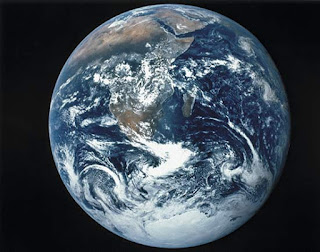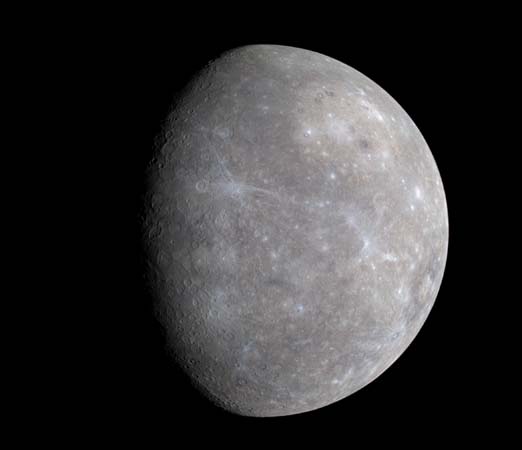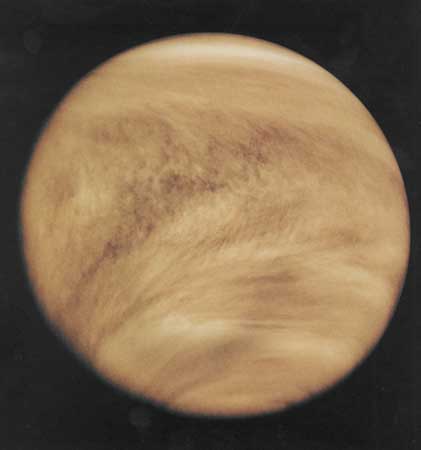No, we don’t know of
any other planets exactly like Earth, with its unique life forms. But Earth has
similarities to three other planets orbiting the Sun – Mercury, Venus, and
Mars. All four are made of rock and metal, orbit close to the Sun, and have
relatively hot surfaces. They are known as the terrestrial or rocky planets.
I don’t believe it!
Mercury
Mercury is named after
the Roman messenger to the gods because of its speedy movement. It is the
smallest planet – Earth is 2.5 times bigger. It is also the densest planet,
with a huge iron core. The temperature of Mercury ranges from 430 degree
Celsius in the day to -180 degree Celsius at night. The planet has a dark,
dusty, surface, covered with craters and unchanged for a billion years.
Venus
Venus is the easiest
planet to see in Earth’s sky. Look out for it in the east just before sunrise
and in the west just after sunset. It looks like a brilliant star and is
nicknamed the “morning star” and “evening star”.
Venus is named after
the Roman goddess of love and beauty. It is surrounded by dense clouds
stretching up to 80 km above the surface. The clouds are made of dilute
sulphuric acid droplets and reflect 80 per cent of the sunlight, making Venus
overcast. Heat is trapped by the clouds in the same way glass traps heat in a
greenhouse. Venus has hundreds of volcanoes and about 85 per cent of the planet
is covered in volcanic lava. The biggest are shallow shield volcanoes, like
those in Hawaii on Earth.
I don’t believe it!
A Venusian day is longer
than a Venusian year. Venus is the slowest spinner of all the planets, taking
243 days to spin once. But as it spins it travels on its orbit around the Sun
once every 224.7 days. The time between one sunrise and the next is 117 Earth
days.
Martian myths
Ø In the 1870s, as Italian astronomer was
mistranslated, which led people to believe he had seen canals on Mars built by
Martians.
Ø When a radio version of the H G Wells book War of the Worlds was broadcast in 1983,
listeners panicked because they thought they had tuned into a news alert and
that Martians had landed on Earth.
Ø Photographs taken by spacecraft in 1976 seemed to
show a 3.2 km long human face on Mars’ surface. It later proved to be a huge
rock formation.
Ø About 50 years ago, astronomers studying Mars’ moon
Phobos concluded it was artificial – a metal hollow sphere made by Martians.
I don’t believe it!
Olympus Mons
is the largest volcano on Mars, and in the Solar System. It is 24 km high and
648 km across.
Just over 100 years
ago, a large money prize was offered for the first person to communicate with
an extra-terrestrial. Mars was excluded from the competition, because it was
thought that getting in touch with Martians would be too easy.
Life on Earth
Ø Earth is the only place in the Universe where life
is known.
Ø It is home to 1.5 million distinct forms of life and
more are being discovered all the time.
Ø Earth is just far enough away from the Sun for
liquid water and life to exist. If it were any closer, Earth would be too hot,
any further away, and it would be too cold.
Ø More than 70 per cent of Earth is covered in water.
If the planet was perfectly smooth its surface would be covered with a layer
2.8 km deep.
Ø Earth has just the right temperature for its water
to be liquid. Mercury and Venus are too hot, and their water has evaporated.
Most of Mars’ water if frozen beneath the surface.








0 comments:
Post a Comment